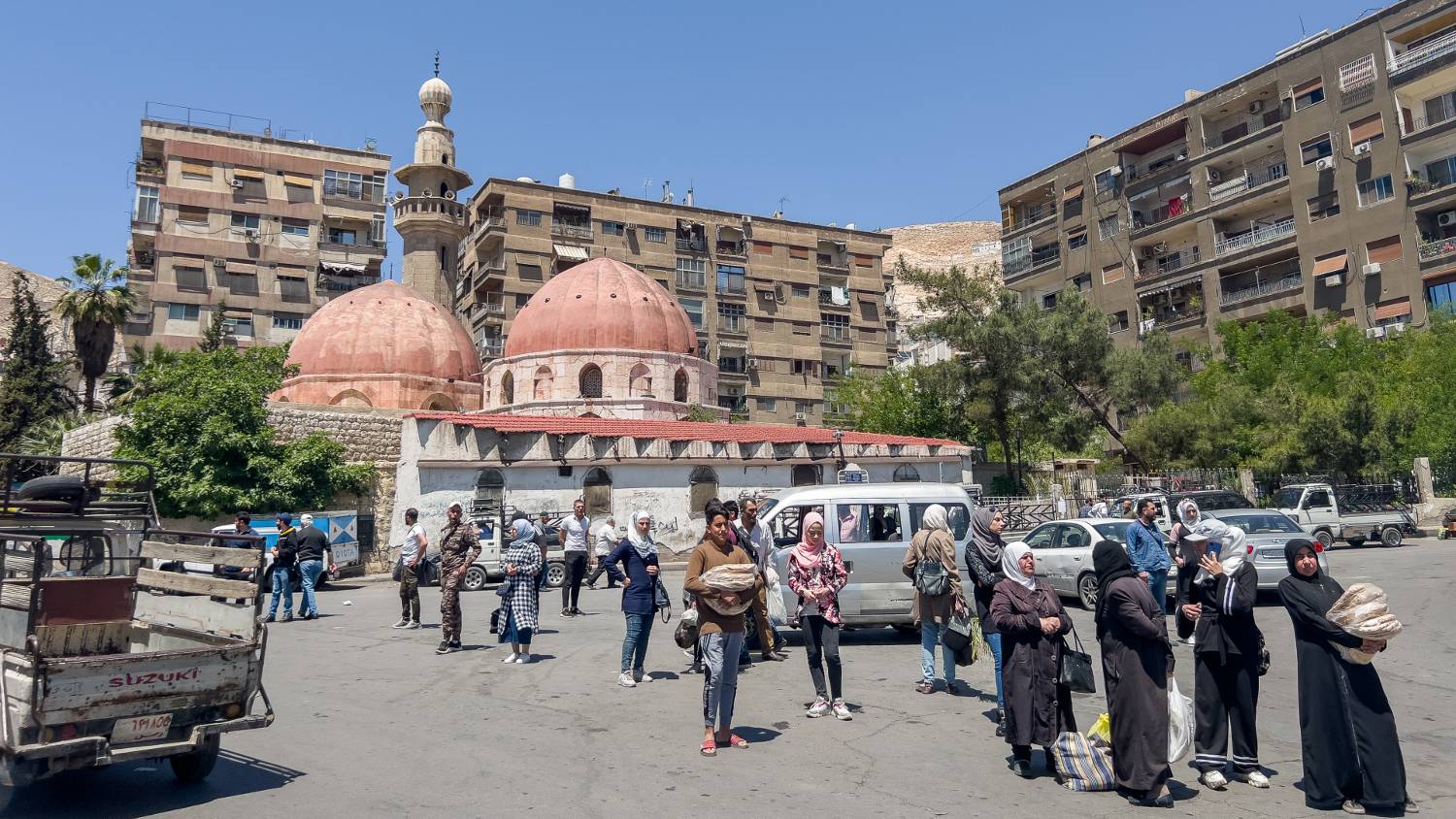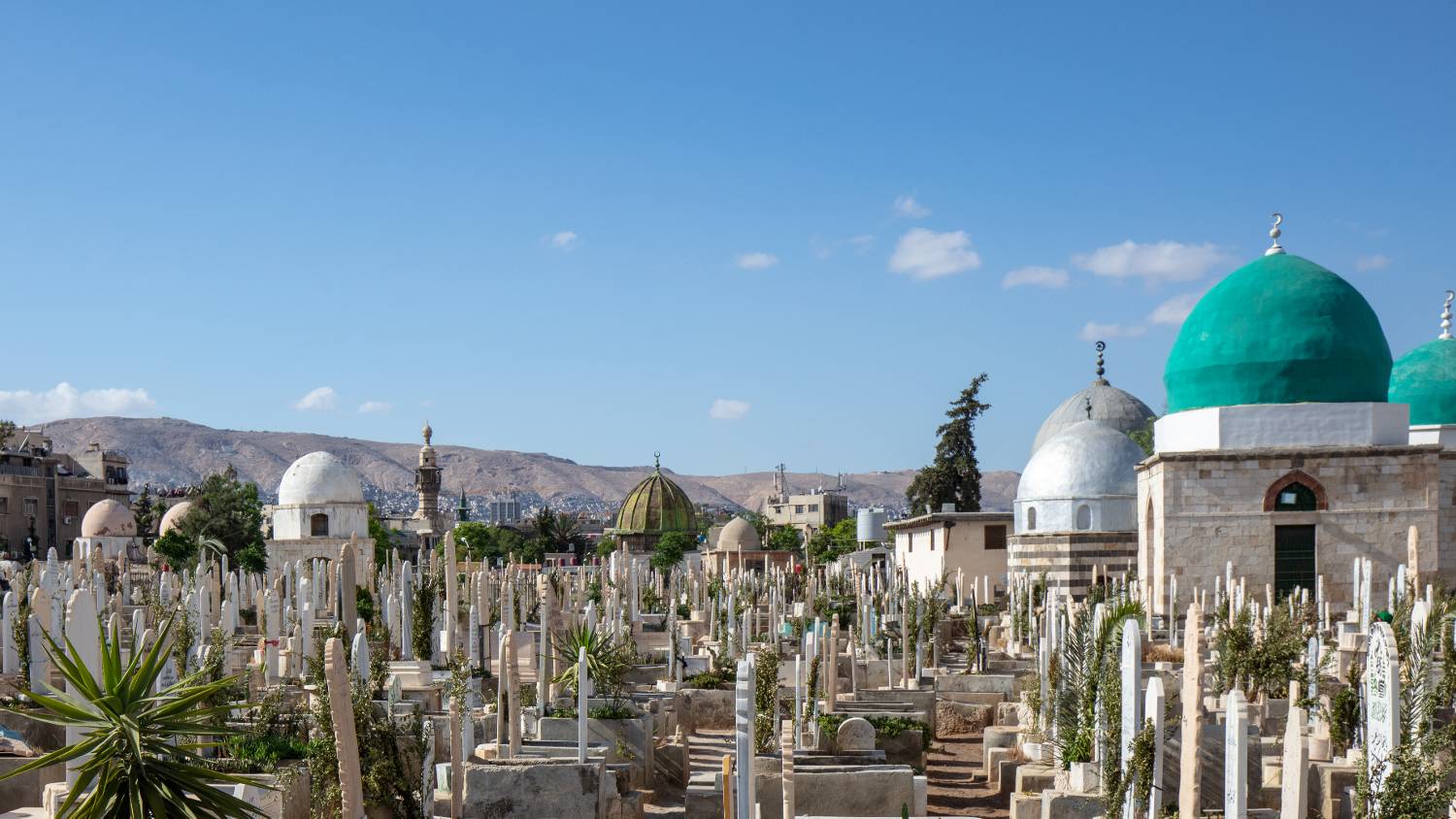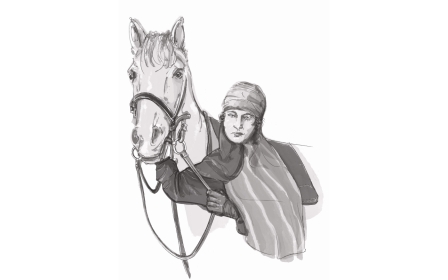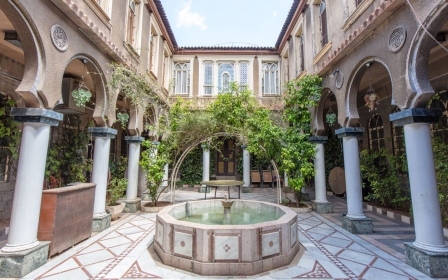Mount Qasioun: The 'holy mountain' of Damascus
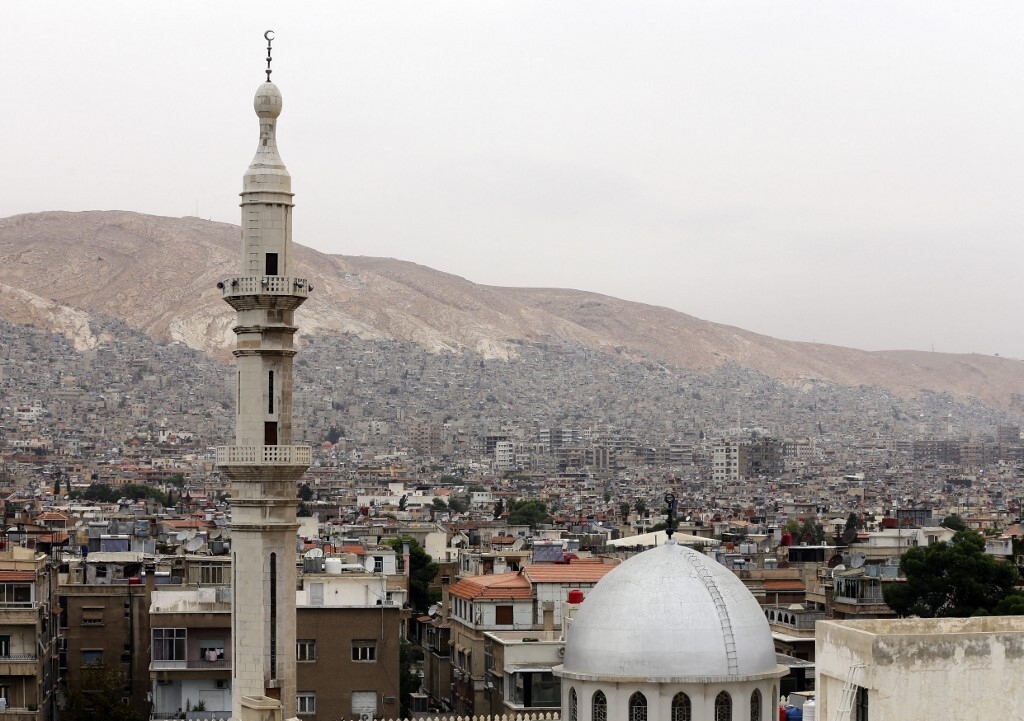
North of Damascus lies Mount Qasioun (Jabal Qasiyun in Arabic), known to some as a "holy mountain". It has been a place of significance for prophets and mystics for millennia, and the reputed site for key events described in the Quran and other historic Islamic works.
It also offers unrivalled panoramic views of the ancient city.
Although some of its famous viewpoints and its restaurant have been closed since the Syrian war started in 2011, a section of the mountain remains open. During winter, the mountaintop is covered with snow, and on summer days it provides shelter and cool air for those looking to escape the sweltering heat.
Then there are some who climb its slopes no matter the season. Middle East Eye decided to join them.
To reach the mountain you head northwest of the old walled city of Damascus towards the neighbourhood of Al-Salihiyya, once famous for its many Sufi houses of rest for religous travellers, called khanqahs, as well as the mosque and resting place of Ibn Arabi, the 12th century Andalusian Sufi scholar.
New MEE newsletter: Jerusalem Dispatch
Sign up to get the latest insights and analysis on Israel-Palestine, alongside Turkey Unpacked and other MEE newsletters
Once arriving at Shamdeen Square, you can either begin the full ascent by foot, or take a taxi - one willing to navigate the extremely tight and windy roads - part of the way up the mountain, until a point where the roads become too narrow for modern cars and visitors must start walking. Today, there are concrete steps that safely take visitors up in just 15 minutes.
At the top of the steps is the entrance to a set of caves and a mosque. From here, one can view all of Damascus, in an unparalleled panoramic view. The Umayyad Mosque at the heart of the old city, and modern skyscrapers on the outskirts, show the vastness of the capital.
The story of Cain and Abel
On my arrival, the caretaker of the mosque and caves welcomed me with typical Syrian hospitality, and after brief salutations takes me into what is known as the Cave of the Blood (Magharat al-Dam). It is here, legend says, that Abel (Habil) was killed by his brother Cain (Qabil) and the blood of Abel has stained the mountain red from its base to halfway up, ending only at the cave.
As I stood listening to the story in complete darkness, I switched on the flashlight of my phone and indeed saw the red stone that stood out from other parts of the mountain visible on the climb; other parts of the cave were a dusty brown.
In 1184, the Andalusian travel writer and poet Ibn Jubayr visited Damascus, and noted: "The blood reaches from about halfway up the mountain to the cave [where Abel was dragged up by his brother after being murdered], and God has preserved red traces of it on stones on the mountain."
In local tradition, it is said that when the murder took place between the sons of Adam, the mountain shook in horror and began to crumble, and if it were not for the intervention of the archangel Jibreel (Gabriel), who stopped the shaking with one of his hands, the mountain would have collapsed. A marker of the event is a handprint indented on the roof of the cave, associated with Jibreel.
Quranic prophets
At the entrance to the cave where it widens, located on either side, are two mihrabs - a niche in the wall of a mosque, from where the imam leads prayers. According to Ibn Jubayr: "In this cave prayed Abraham, Moses, Jesus, Lot, and Job."
My guide, the caretaker, affirmed the tradition but added that the mihrab to the right of the entrance is where Abraham would pray, and the one on the left is where Khidr, a mystical figure in Islamic tradition, would pray.
On leaving the cave, another set of stairs takes visitors into the mosque located right above, in which 40 mihrabs line the wall, facing the direction of prayer.
According to local tradition, each night 40 saints, known as the abdal, enter the mosque and each prays in his mihrab. On MEE's entry into the mosque, a group of women was praying behind one another in one of the first mihrabs. According to tradition, no supplications made in this space are denied.
Leaving the mosque and climbing another set of stairs from the courtyard brings you to a single, tall citrus tree swaying gently in the cool breeze found this high up.
The caretaker and three of his sons stay in what appeared to be a living quarter: a single room with a sink, wooden table with two plastic chairs, and a mattress were all the room contained. The caretaker took a seat while his sons, barely teenagers, sat on the mattress. He lit a cigarette and we drank the coffee slowly, while looking out of the window at the most spectacular view. We then talked about the stories associated with this "holy mountain".
'Wonders of the heavens and Earth'
Ibn Jubayr mentions another story, which he attributes to the 12th-century Islamic scholar Ibn Asakir and is part of a collection known as The Story of Damascus. The story holds that the Prophet Abraham was born on the slopes of this mountain, near a village called Barzeh, inside a long and narrow cave, a mile away from where we now sat.
"From this cave Abraham - may God bless and preserve him - saw first the stars and then the moon and then the sun, as God Most High has described in His glorious and sublime Book," Ibn Jubayr narrates.
The Quran also makes mention of Abraham witnessing the moon.
"We also showed Abraham the wonders of the heavens and the Earth, so he would be sure in faith.
"When the night grew dark upon him, he saw a star and said, 'This is my Lord!' But when it set, he said, 'I do not love things that set.' Then when he saw the moon rising, he said, 'This one is my Lord!' But when it disappeared, he said, 'If my Lord does not guide me, I will certainly be one of the misguided people.'
"Then when he saw the sun shining, he said, 'This must be my Lord - it is the greatest!' But again when it set, he declared, 'Oh my people! I totally reject whatever you associate with Allah in worship. I have turned my face towards the One who has originated the heavens and the Earth - being upright - and I am not one of the polytheists."
At the western edge of the mountain, Ibn Jubayr writes and local traditions still affirm, is a hill mentioned in the Quran, where Jesus (Isa in Arabic) lived with his mother, Mary (Maryam).
What is striking about the stories, besides their sheer volume and religious significance, is the consistency in detail. These were the same as those shared by the caretaker, whose information aligned perfectly with historic records and narratives.
Ibn Jubayr had climbed the same slopes 800 years earlier, prayed in the same spots, and then came to learn and narrate the same legends.
At the bottom of Mount Qasioun are the ancient quarries that have provided Damascus with the pale limestone needed to create the famous ablaq design, an alternating row of light and dark stone used extensively in Damascus mosques, madrasas and palaces. Though popularised later by the Mamluks in Cairo, the ablaq is a Damascene invention.
Also located at the bottom of the mountain, in the neighbourhood of Al-Salihiyya, is the mosque and mausoleum of Ibn Arabi, the renowned Andalusian scholar and mystic, considered a saint.
This area was first settled by a Palestinian family who fled Nablus in 1156, under threat from Crusaders, and helped to establish a vibrant Hanbali (Sunni Islamic) community. The family had originally settled in a neighbourhood around the Mosque of Abu Salih in Damascus, but when they relocated to the area of Qassyun they took the name Al-Salihiyya with them.
Under the leadership of Sheikh Ahmad al-Qudama and his son, Abu Umar, this largely Palestinian community made this area their home, encouraged by the rule of the Turkic Zengid dynasty in the 12th century.
Nur ad-Din (d. 1174) established the khanqah in an existing Hanbali monastery on the slopes of Mount Qasioun.
Less than a hundred years later, on his way back from performing Hajj, Ibn Arabi settled in Damascus, in Al-Salihiyya, where he died and was buried. His presence brought fame to the city for centuries and made it a centre for Sufi mysticism, adding to the notion of not only Mount Qasioun but all of Damascus being a "holy place".
However, it was not until the Ottoman conquest of Damascus in 1516, when Sultan Selim ordered a mosque be built next to the tomb of Ibn Arabi, that the mausoleum gained significance in the physical sense as well as in the imagination of mystics in the Islamic world.
It is a tradition that can be felt in the caves, mosques, prayer sites and slopes of Mount Qasioun to this day.
This article is available in French on Middle East Eye French edition.
Middle East Eye delivers independent and unrivalled coverage and analysis of the Middle East, North Africa and beyond. To learn more about republishing this content and the associated fees, please fill out this form. More about MEE can be found here.


